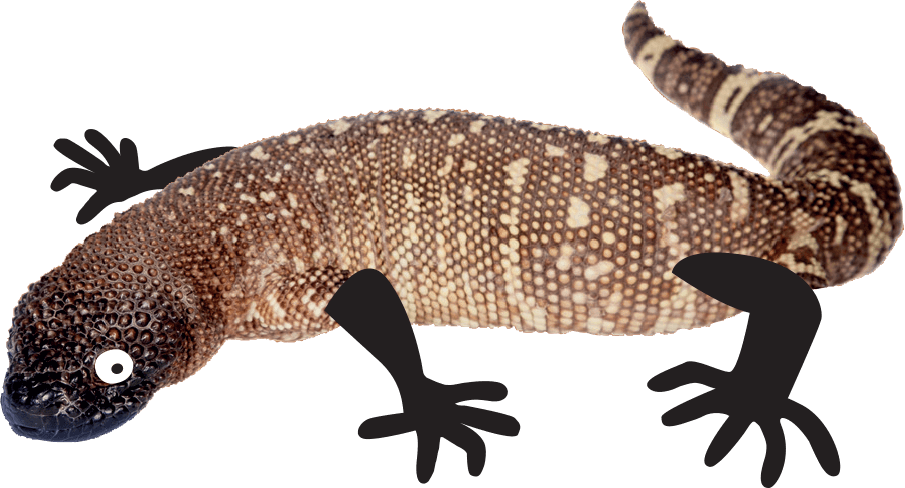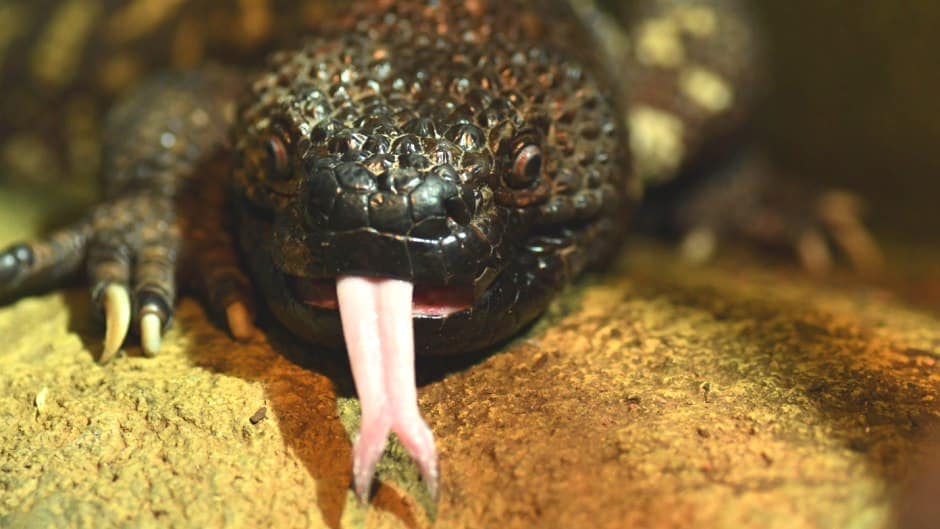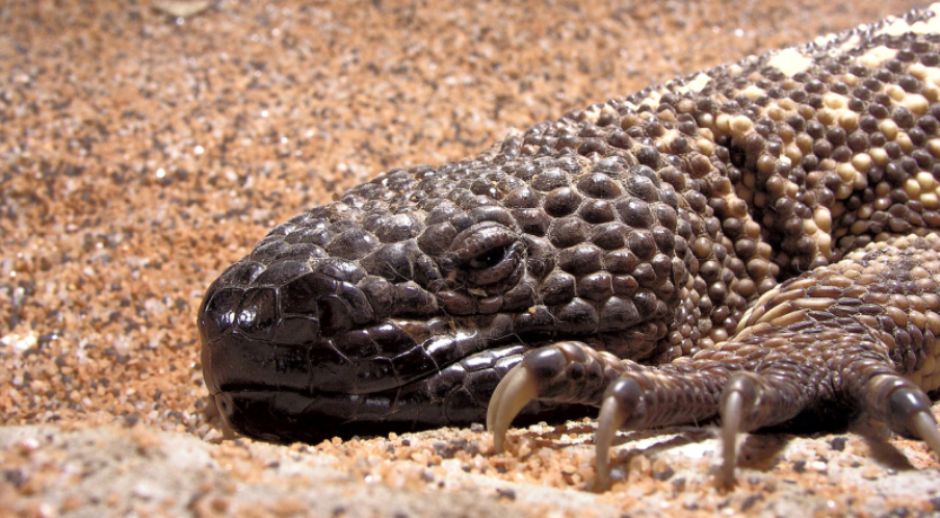Beaded lizard
Common Name: Beaded lizard
Scientific Name: Heloderma horridum
Beaded lizards are one of only two species of venomous lizard. They have special grooved teeth to release venom when they bite.
Beaded Lizards will gape and hiss if they feel threatened. They may also use their venom to overpower potential predators such as humans, coyotes, and raptors.
These lizards are nocturnal. They hide in burrows during the day and are active at night.
Fast Facts
-
Status
Least Concern
-
Size
Females: 76 cm in length, Males: up to 90 cm
-
Weight
Females: 1.4 to 2 kg; Males: up to 4kg
-
Gestation
6 months
-
Young
3-13 eggs are laid
-
Life span
22 years

In the wild
Beaded lizards are carnivores. Their diet includes mammals, birds, lizards, frogs, insects, and the eggs of birds and reptiles. They swallow their prey whole, except for eggs, which they break first. When food is in short supply, these lizards are able to live off the fat reserves in their tail.
Beaded lizards are found in a variety of habitats in Mexico and Guatemala. They are most often found in tropical deciduous forest, but are also found in thorn forests, tropical scrubland and pine-oak forest.
Beaded lizards breed in February and March. About two months after mating, females lay between 3 and 13 eggs, which they bury and then abandon. After about 6 months of incubation, the young, which may be up to 20 cm long, emerge from the eggs.
Beaded lizards are known to be predated upon by coyotes and some birds of prey.
Beaded lizard numbers are thought to be declining slowly for a number of reasons. They are threatened by habitat loss due to deforestation for agriculture and human settlements. In some areas they are threatened by forest fires. They are also deliberately killed because people are scared of their venom.
However this species is protected by law in Mexico and Guatemala, and are found in a number of protected areas. Beaded lizards are listed on Appendix II of CITES which means that trade in these animals or any of its part is restricted.

